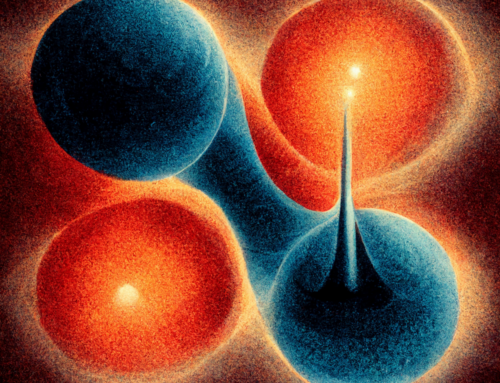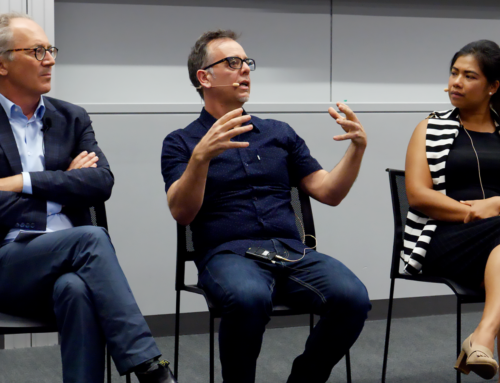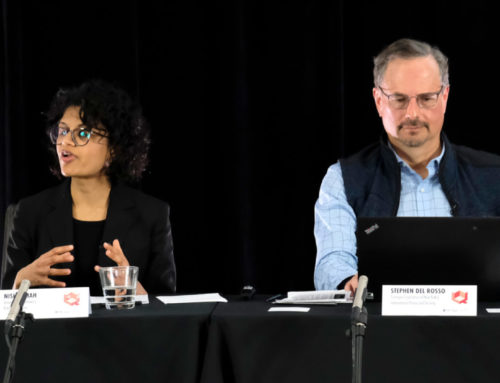Wars and atoms have, as it were, a conjugated history.
On the eve of the Second World War, physicists Albert Einstein and Leó Szilárd wrote a letter to President Franklin D Roosevelt to inform him of the destructive potential of nuclear fission.
The letter would trigger a chain-reaction, as it were, beginning with the Manhattan Project and leading to the first use of nuclear weapons, continuing through to an arms race without end. Einstein later offered a baleful post-mortem: “The unleashed power of the atom has changed everything save our modes of thinking, and thus we drift toward unparalleled catastrophe.”
One hundred years ago, German Chancellor Theobald von Bethmann Hollweg predicted on the eve of the First World War that the coming violence would “overthrow all that exists.” He could not possibly have known how right he was, as his prediction would be borne out by revolutions political, intellectual, and scientific. The war emerged from a Newtonian logic; one which ensured that trains set in motion would stay in motion, carrying unprecedented assemblages of violence across vast distances until they met equal and opposite forces and settled into the stagnant equilibrium of trench warfare. But these events would also enable a series of revolutions that made possible a paradigmatic shift to a new, post-Newtonian logic that led to the later discoveries in atomic physics.
These global events and their intellectual products changed the way we think about space and time, war and peace. But should we not also address Einstein’s lament and change the way we think about these events? When we keep notions of probability, entanglement and complementarity in mind, we must treat the relationship of their coterminous developments as more than coincidence and less than causal. The manners in which we conduct war and wage science are always entangled, so as science changes the ways we conceive of our world, so too must we reconsider the ways we perceive and commemorate our world wars.
It was Einstein and Szilárd’s letter which served as the initial inspiration for last February’s inaugural Q Symposium (Q1), which brought scholars from around the world to the University of Sydney’s Centre for International Security Studies (CISS) to collaborate on the pursuit of new modes of thinking for a quantum era.
In many ways a prequel, the theme of this past weekend’s second Q Symposium (Q2) is “The Space-Time of War and Diplomacy”. It looked to take a step back to the future, to undertake a joint investigation of the complementarity of two centennial anniversaries — the First World War and the quantum revolution — that overthrew classical orders of both politics and physics.
In the time between the first stage of the quantum revolution (bracketed by Max Planck’s conception of “quanta” in 1900 and Einstein’s theories of special and general theories of relativity in 1905 and 1915) to the second (set off by Werner Heisenberg’s uncertainty principle, Max Born’s probabilistic mechanics and Niels Bohr’s complementarity principle, both space and time and war and diplomacy underwent major transformations.
The Great War became the catalyst of technological and political revolutions. It took to the skies, adding new spatial dimensions that would fundamentally revolutionise warfare. It moved inside the body, combining advanced chemistry and industrialisation to mass-produce nerve agents capable of inducing the body to revolt against itself.
Requiring the mobilisation (and burdening) of more classes and groups than ever before, it took to new levels of society — with general strikes and open revolution against the extant political orders soon to follow.
And while the treaties of Brest-Litovsk and Versailles brought an end to the war in the East and the West, the revolutions were just beginning. As Bolsheviks, Spartacists, fascists and others continued their efforts towards the overthrow of regimes, Bohr and contemporaries were doing the same in challenging the fundamentals of the physical universe.
The most significant battles in what everyone from Lenin to Einstein called “the crisis in physics” erupted over causality and classical determinism.
Subsequent skirmishes waged through the work of Weyl, Bohr, de Broglie, Schrödinger, and Heisenberg drove quantum’s advance. It eroded classical causality’s entrenched position through successive manoeuvres on its exposed flanks of energy conservation and newly conceived deficiencies in describing atomic processes. Within a decade, the quantum interpretation had overthrown the dominant conceptions of literally all that exists.
When later progenitors of political science envisioned the development of a “total science” of politics, they brought with them the classical notion of causality from economics, history, and philosophy.
Like Q2, the nascent international relations and security literature also looked back to the future — usually choosing the First World War in particular as the “empirical” case for its scientifically described security dilemmas, spiral models and offense-defence balance. Those looking to attribute causality to events of cataclysmic violence were basing their theories on the very events that presaged its demise in physics.
Q2 addresses the extra-disciplinary, explanatory and metaphorical powers of quantum in contrast to earlier theories, concepts and tropes borrowed from classical physics, economics and other sciences (with states as “billiard balls”, “black boxes” or “rational actors”) that continue to dominate much of the international security field.
With nation-states, corporations and scientific research centres — including here in Australia — pushing hard to get quantum computing, control and communications online, there is an added responsibility for universities to address the potential and actuality implications of quantum power.
It is on these lines that we think it necessary to look forward to the past once more. To question classical causality as well as to explore new quantum concepts in light of a reconfiguration of power in international politics.
With the support of the Carnegie Corporation of New York, CISS welcomes a diverse range of scientists, historians, diplomats, writers and filmmakers to Q2, and invites the world at large to join us in a thought experiment on the space-time of war and diplomacy.
This piece was penned by CISS Director James Der Derian and QSymposium rapporteur Ben Foldy. Another version of this piece was published at The Conversation.







Leave a Reply